CD152 Rabbit Polyclonal Antibody
To Order: garrett@bioworldantibodies.com
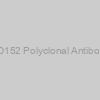 CD152 Polyclonal Antibody |
|
E046815 |
EnoGene |
100μg/100μl |
EUR 255 |
|
Description: Available in various conjugation types. |
 CD152 Polyclonal Antibody |
|
E11-2035933 |
EnoGene |
100ug/100ul |
EUR 225 |
|
Description: Available in various conjugation types. |
 CD152 Polyclonal Antibody |
|
46815 |
SAB |
100ul |
EUR 319 |
 CD152 Polyclonal Antibody |
|
46815-100ul |
SAB |
100ul |
EUR 302.4 |
 CD152 Polyclonal Antibody |
|
46815-50ul |
SAB |
50ul |
EUR 224.4 |
 CD152 Polyclonal Antibody |
|
ABP58036-003ml |
Abbkine |
0.03ml |
EUR 189.6 |
|
|
|
Description: A polyclonal antibody for detection of CD152 from Human. This CD152 antibody is for IHC-P, ELISA. It is affinity-purified from rabbit serum by affinity-chromatography using the specific immunogenand is unconjugated. The antibody is produced in rabbit by using as an immunogen synthesized peptide derived from part region of human CD152 protein at amino acid sequence of 41-90 |
 CD152 Polyclonal Antibody |
|
ABP58036-01ml |
Abbkine |
0.1ml |
EUR 346.8 |
|
|
|
Description: A polyclonal antibody for detection of CD152 from Human. This CD152 antibody is for IHC-P, ELISA. It is affinity-purified from rabbit serum by affinity-chromatography using the specific immunogenand is unconjugated. The antibody is produced in rabbit by using as an immunogen synthesized peptide derived from part region of human CD152 protein at amino acid sequence of 41-90 |
 CD152 Polyclonal Antibody |
|
ABP58036-02ml |
Abbkine |
0.2ml |
EUR 496.8 |
|
|
|
Description: A polyclonal antibody for detection of CD152 from Human. This CD152 antibody is for IHC-P, ELISA. It is affinity-purified from rabbit serum by affinity-chromatography using the specific immunogenand is unconjugated. The antibody is produced in rabbit by using as an immunogen synthesized peptide derived from part region of human CD152 protein at amino acid sequence of 41-90 |
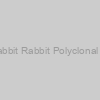 CD10 Rabbit Rabbit Polyclonal Antibody |
|
ES8454-100ul |
ELK Biotech |
100ul |
EUR 124 |
|
|
|
Description: A Rabbit Polyclonal antibody against CD10 Rabbit from Human/Mouse/Rat. This antibody is tested and validated for IHC |
 CD10 Rabbit Rabbit Polyclonal Antibody |
|
ES8454-50ul |
ELK Biotech |
50ul |
EUR 74 |
|
|
|
Description: A Rabbit Polyclonal antibody against CD10 Rabbit from Human/Mouse/Rat. This antibody is tested and validated for IHC |
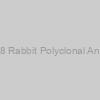 CD108 Rabbit Polyclonal Antibody |
|
ES1893-100ul |
ELK Biotech |
100ul |
EUR 124 |
|
|
|
Description: A Rabbit Polyclonal antibody against CD108 from Human/Mouse/Rat. This antibody is tested and validated for WB, ELISA, WB, ELISA |
 CD108 Rabbit Polyclonal Antibody |
|
ES1893-50ul |
ELK Biotech |
50ul |
EUR 74 |
|
|
|
Description: A Rabbit Polyclonal antibody against CD108 from Human/Mouse/Rat. This antibody is tested and validated for WB, ELISA, WB, ELISA |
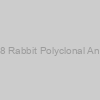 CD138 Rabbit Polyclonal Antibody |
|
ES1895-100ul |
ELK Biotech |
100ul |
EUR 124 |
|
|
|
Description: A Rabbit Polyclonal antibody against CD138 from Human/Rat. This antibody is tested and validated for WB, ELISA, WB, ELISA |
 CD138 Rabbit Polyclonal Antibody |
|
ES1895-50ul |
ELK Biotech |
50ul |
EUR 74 |
|
|
|
Description: A Rabbit Polyclonal antibody against CD138 from Human/Rat. This antibody is tested and validated for WB, ELISA, WB, ELISA |
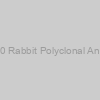 CD160 Rabbit Polyclonal Antibody |
|
ES1896-100ul |
ELK Biotech |
100ul |
EUR 124 |
|
|
|
Description: A Rabbit Polyclonal antibody against CD160 from Human. This antibody is tested and validated for WB, ELISA, IF, WB, ELISA |
 CD160 Rabbit Polyclonal Antibody |
|
ES1896-50ul |
ELK Biotech |
50ul |
EUR 74 |
|
|
|
Description: A Rabbit Polyclonal antibody against CD160 from Human. This antibody is tested and validated for WB, ELISA, IF, WB, ELISA |
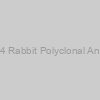 CD284 Rabbit Polyclonal Antibody |
|
ES1902-100ul |
ELK Biotech |
100ul |
EUR 124 |
|
|
|
Description: A Rabbit Polyclonal antibody against CD284 from Human/Mouse. This antibody is tested and validated for WB, ELISA, IHC, WB, ELISA |
 CD284 Rabbit Polyclonal Antibody |
|
ES1902-50ul |
ELK Biotech |
50ul |
EUR 74 |
|
|
|
Description: A Rabbit Polyclonal antibody against CD284 from Human/Mouse. This antibody is tested and validated for WB, ELISA, IHC, WB, ELISA |
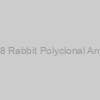 CD298 Rabbit Polyclonal Antibody |
|
ES1903-100ul |
ELK Biotech |
100ul |
EUR 124 |
|
|
|
Description: A Rabbit Polyclonal antibody against CD298 from Human. This antibody is tested and validated for WB, ELISA, WB, ELISA |
 CD298 Rabbit Polyclonal Antibody |
|
ES1903-50ul |
ELK Biotech |
50ul |
EUR 74 |
|
|
|
Description: A Rabbit Polyclonal antibody against CD298 from Human. This antibody is tested and validated for WB, ELISA, WB, ELISA |
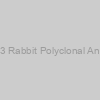 CD133 Rabbit Polyclonal Antibody |
|
ES3922-100ul |
ELK Biotech |
100ul |
EUR 124 |
|
|
|
Description: A Rabbit Polyclonal antibody against CD133 from Human/Mouse. This antibody is tested and validated for WB, ELISA, WB, ELISA |
 CD133 Rabbit Polyclonal Antibody |
|
ES3922-50ul |
ELK Biotech |
50ul |
EUR 74 |
|
|
|
Description: A Rabbit Polyclonal antibody against CD133 from Human/Mouse. This antibody is tested and validated for WB, ELISA, WB, ELISA |
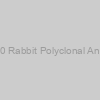 CD100 Rabbit Polyclonal Antibody |
|
ES3989-100ul |
ELK Biotech |
100ul |
EUR 124 |
|
|
|
Description: A Rabbit Polyclonal antibody against CD100 from Human/Mouse/Rat. This antibody is tested and validated for WB, ELISA, WB, ELISA |
 CD100 Rabbit Polyclonal Antibody |
|
ES3989-50ul |
ELK Biotech |
50ul |
EUR 74 |
|
|
|
Description: A Rabbit Polyclonal antibody against CD100 from Human/Mouse/Rat. This antibody is tested and validated for WB, ELISA, WB, ELISA |
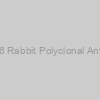 CD116 Rabbit Polyclonal Antibody |
|
ES3992-100ul |
ELK Biotech |
100ul |
EUR 124 |
|
|
|
Description: A Rabbit Polyclonal antibody against CD116 from Human. This antibody is tested and validated for WB, ELISA, IHC, WB, ELISA |
 CD116 Rabbit Polyclonal Antibody |
|
ES3992-50ul |
ELK Biotech |
50ul |
EUR 74 |
|
|
|
Description: A Rabbit Polyclonal antibody against CD116 from Human. This antibody is tested and validated for WB, ELISA, IHC, WB, ELISA |
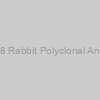 CD248 Rabbit Polyclonal Antibody |
|
ES3997-100ul |
ELK Biotech |
100ul |
EUR 124 |
|
|
|
Description: A Rabbit Polyclonal antibody against CD248 from Human. This antibody is tested and validated for WB, ELISA, WB, ELISA |
 CD248 Rabbit Polyclonal Antibody |
|
ES3997-50ul |
ELK Biotech |
50ul |
EUR 74 |
|
|
|
Description: A Rabbit Polyclonal antibody against CD248 from Human. This antibody is tested and validated for WB, ELISA, WB, ELISA |
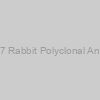 CD307 Rabbit Polyclonal Antibody |
|
ES3998-100ul |
ELK Biotech |
100ul |
EUR 124 |
|
|
|
Description: A Rabbit Polyclonal antibody against CD307 from Human. This antibody is tested and validated for WB, ELISA, IHC, WB, ELISA |
 CD307 Rabbit Polyclonal Antibody |
|
ES3998-50ul |
ELK Biotech |
50ul |
EUR 74 |
|
|
|
Description: A Rabbit Polyclonal antibody against CD307 from Human. This antibody is tested and validated for WB, ELISA, IHC, WB, ELISA |
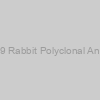 CD229 Rabbit Polyclonal Antibody |
|
ES4001-100ul |
ELK Biotech |
100ul |
EUR 124 |
|
|
|
Description: A Rabbit Polyclonal antibody against CD229 from Human. This antibody is tested and validated for WB, ELISA, IHC, WB, ELISA |
 CD229 Rabbit Polyclonal Antibody |
|
ES4001-50ul |
ELK Biotech |
50ul |
EUR 74 |
|
|
|
Description: A Rabbit Polyclonal antibody against CD229 from Human. This antibody is tested and validated for WB, ELISA, IHC, WB, ELISA |
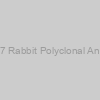 CD207 Rabbit Polyclonal Antibody |
|
ES4005-100ul |
ELK Biotech |
100ul |
EUR 124 |
|
|
|
Description: A Rabbit Polyclonal antibody against CD207 from Human. This antibody is tested and validated for WB, ELISA, WB, ELISA |
 CD207 Rabbit Polyclonal Antibody |
|
ES4005-50ul |
ELK Biotech |
50ul |
EUR 74 |
|
|
|
Description: A Rabbit Polyclonal antibody against CD207 from Human. This antibody is tested and validated for WB, ELISA, WB, ELISA |
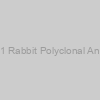 CD161 Rabbit Polyclonal Antibody |
|
ES4006-100ul |
ELK Biotech |
100ul |
EUR 124 |
|
|
|
Description: A Rabbit Polyclonal antibody against CD161 from Human. This antibody is tested and validated for WB, ELISA, WB, ELISA |
 CD161 Rabbit Polyclonal Antibody |
|
ES4006-50ul |
ELK Biotech |
50ul |
EUR 74 |
|
|
|
Description: A Rabbit Polyclonal antibody against CD161 from Human. This antibody is tested and validated for WB, ELISA, WB, ELISA |
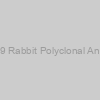 CD329 Rabbit Polyclonal Antibody |
|
ES4008-100ul |
ELK Biotech |
100ul |
EUR 124 |
|
|
|
Description: A Rabbit Polyclonal antibody against CD329 from Human. This antibody is tested and validated for WB, ELISA, WB, ELISA |
 CD329 Rabbit Polyclonal Antibody |
|
ES4008-50ul |
ELK Biotech |
50ul |
EUR 74 |
|
|
|
Description: A Rabbit Polyclonal antibody against CD329 from Human. This antibody is tested and validated for WB, ELISA, WB, ELISA |
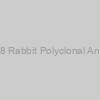 CD328 Rabbit Polyclonal Antibody |
|
ES4011-100ul |
ELK Biotech |
100ul |
EUR 124 |
|
|
|
Description: A Rabbit Polyclonal antibody against CD328 from Human. This antibody is tested and validated for WB, ELISA, IHC, WB, ELISA |
 CD328 Rabbit Polyclonal Antibody |
|
ES4011-50ul |
ELK Biotech |
50ul |
EUR 74 |
|
|
|
Description: A Rabbit Polyclonal antibody against CD328 from Human. This antibody is tested and validated for WB, ELISA, IHC, WB, ELISA |
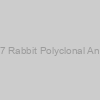 CD177 Rabbit Polyclonal Antibody |
|
ES4013-100ul |
ELK Biotech |
100ul |
EUR 124 |
|
|
|
Description: A Rabbit Polyclonal antibody against CD177 from Human. This antibody is tested and validated for WB, ELISA, IHC, WB, ELISA |
 CD177 Rabbit Polyclonal Antibody |
|
ES4013-50ul |
ELK Biotech |
50ul |
EUR 74 |
|
|
|
Description: A Rabbit Polyclonal antibody against CD177 from Human. This antibody is tested and validated for WB, ELISA, IHC, WB, ELISA |
 CD241 Rabbit Polyclonal Antibody |
|
ES4014-100ul |
ELK Biotech |
100ul |
EUR 124 |
|
|
|
Description: A Rabbit Polyclonal antibody against CD241 from Human. This antibody is tested and validated for WB, ELISA, IHC, WB, ELISA |
 CD241 Rabbit Polyclonal Antibody |
|
ES4014-50ul |
ELK Biotech |
50ul |
EUR 74 |
|
|
|
Description: A Rabbit Polyclonal antibody against CD241 from Human. This antibody is tested and validated for WB, ELISA, IHC, WB, ELISA |
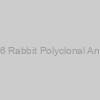 CD276 Rabbit Polyclonal Antibody |
|
ES4015-100ul |
ELK Biotech |
100ul |
EUR 124 |
|
|
|
Description: A Rabbit Polyclonal antibody against CD276 from Human/Mouse/Rat. This antibody is tested and validated for WB, ELISA, IHC, WB, ELISA |
 CD276 Rabbit Polyclonal Antibody |
|
ES4015-50ul |
ELK Biotech |
50ul |
EUR 74 |
|
|
|
Description: A Rabbit Polyclonal antibody against CD276 from Human/Mouse/Rat. This antibody is tested and validated for WB, ELISA, IHC, WB, ELISA |
 CD160 Rabbit Polyclonal Antibody |
|
ES4016-100ul |
ELK Biotech |
100ul |
EUR 124 |
|
|
|
Description: A Rabbit Polyclonal antibody against CD160 from Human. This antibody is tested and validated for WB, ELISA, IHC, WB, ELISA |
 CD160 Rabbit Polyclonal Antibody |
|
ES4016-50ul |
ELK Biotech |
50ul |
EUR 74 |
|
|
|
Description: A Rabbit Polyclonal antibody against CD160 from Human. This antibody is tested and validated for WB, ELISA, IHC, WB, ELISA |
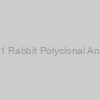 CD201 Rabbit Polyclonal Antibody |
|
ES4017-100ul |
ELK Biotech |
100ul |
EUR 124 |
|
|
|
Description: A Rabbit Polyclonal antibody against CD201 from Human/Mouse/Rat. This antibody is tested and validated for WB, ELISA, IHC, WB, ELISA |
 CD201 Rabbit Polyclonal Antibody |
|
ES4017-50ul |
ELK Biotech |
50ul |
EUR 74 |
|
|
|
Description: A Rabbit Polyclonal antibody against CD201 from Human/Mouse/Rat. This antibody is tested and validated for WB, ELISA, IHC, WB, ELISA |
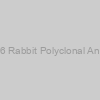 CD166 Rabbit Polyclonal Antibody |
|
ES4126-100ul |
ELK Biotech |
100ul |
EUR 124 |
|
|
|
Description: A Rabbit Polyclonal antibody against CD166 from Human/Mouse/Rat. This antibody is tested and validated for WB, ELISA, IHC, WB, ELISA |
 CD166 Rabbit Polyclonal Antibody |
|
ES4126-50ul |
ELK Biotech |
50ul |
EUR 74 |
|
|
|
Description: A Rabbit Polyclonal antibody against CD166 from Human/Mouse/Rat. This antibody is tested and validated for WB, ELISA, IHC, WB, ELISA |
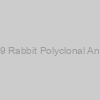 CD169 Rabbit Polyclonal Antibody |
|
ES4129-100ul |
ELK Biotech |
100ul |
EUR 124 |
|
|
|
Description: A Rabbit Polyclonal antibody against CD169 from Human. This antibody is tested and validated for WB, ELISA, WB, ELISA |
 CD169 Rabbit Polyclonal Antibody |
|
ES4129-50ul |
ELK Biotech |
50ul |
EUR 74 |
|
|
|
Description: A Rabbit Polyclonal antibody against CD169 from Human. This antibody is tested and validated for WB, ELISA, WB, ELISA |
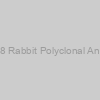 CD148 Rabbit Polyclonal Antibody |
|
ES4130-100ul |
ELK Biotech |
100ul |
EUR 124 |
|
|
|
Description: A Rabbit Polyclonal antibody against CD148 from Human. This antibody is tested and validated for WB, ELISA, IHC, WB, ELISA |
 CD148 Rabbit Polyclonal Antibody |
|
ES4130-50ul |
ELK Biotech |
50ul |
EUR 74 |
|
|
|
Description: A Rabbit Polyclonal antibody against CD148 from Human. This antibody is tested and validated for WB, ELISA, IHC, WB, ELISA |
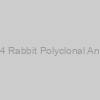 CD294 Rabbit Polyclonal Antibody |
|
ES4135-100ul |
ELK Biotech |
100ul |
EUR 124 |
|
|
|
Description: A Rabbit Polyclonal antibody against CD294 from Human/Mouse. This antibody is tested and validated for WB, ELISA, IHC, WB, ELISA |
 CD294 Rabbit Polyclonal Antibody |
|
ES4135-50ul |
ELK Biotech |
50ul |
EUR 74 |
|
|
|
Description: A Rabbit Polyclonal antibody against CD294 from Human/Mouse. This antibody is tested and validated for WB, ELISA, IHC, WB, ELISA |
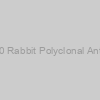 CD110 Rabbit Polyclonal Antibody |
|
ES4199-100ul |
ELK Biotech |
100ul |
EUR 124 |
|
|
|
Description: A Rabbit Polyclonal antibody against CD110 from Human/Mouse/Rat. This antibody is tested and validated for WB, ELISA, IHC, WB, ELISA |
 CD110 Rabbit Polyclonal Antibody |
|
ES4199-50ul |
ELK Biotech |
50ul |
EUR 74 |
|
|
|
Description: A Rabbit Polyclonal antibody against CD110 from Human/Mouse/Rat. This antibody is tested and validated for WB, ELISA, IHC, WB, ELISA |
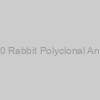 CD200 Rabbit Polyclonal Antibody |
|
ES4204-100ul |
ELK Biotech |
100ul |
EUR 124 |
|
|
|
Description: A Rabbit Polyclonal antibody against CD200 from Human. This antibody is tested and validated for WB, ELISA, IHC, WB, ELISA |
 CD200 Rabbit Polyclonal Antibody |
|
ES4204-50ul |
ELK Biotech |
50ul |
EUR 74 |
|
|
|
Description: A Rabbit Polyclonal antibody against CD200 from Human. This antibody is tested and validated for WB, ELISA, IHC, WB, ELISA |
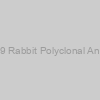 CD239 Rabbit Polyclonal Antibody |
|
ES4207-100ul |
ELK Biotech |
100ul |
EUR 124 |
|
|
|
Description: A Rabbit Polyclonal antibody against CD239 from Human/Mouse/Rat. This antibody is tested and validated for WB, ELISA, WB, ELISA |
 CD239 Rabbit Polyclonal Antibody |
|
ES4207-50ul |
ELK Biotech |
50ul |
EUR 74 |
|
|
|
Description: A Rabbit Polyclonal antibody against CD239 from Human/Mouse/Rat. This antibody is tested and validated for WB, ELISA, WB, ELISA |
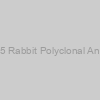 CD225 Rabbit Polyclonal Antibody |
|
ES4208-100ul |
ELK Biotech |
100ul |
EUR 124 |
|
|
|
Description: A Rabbit Polyclonal antibody against CD225 from Human. This antibody is tested and validated for WB, ELISA, IHC, WB, ELISA |
 CD225 Rabbit Polyclonal Antibody |
|
ES4208-50ul |
ELK Biotech |
50ul |
EUR 74 |
|
|
|
Description: A Rabbit Polyclonal antibody against CD225 from Human. This antibody is tested and validated for WB, ELISA, IHC, WB, ELISA |
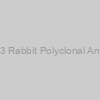 CD223 Rabbit Polyclonal Antibody |
|
ES4210-100ul |
ELK Biotech |
100ul |
EUR 124 |
|
|
|
Description: A Rabbit Polyclonal antibody against CD223 from Human. This antibody is tested and validated for WB, ELISA, WB, ELISA |
 CD223 Rabbit Polyclonal Antibody |
|
ES4210-50ul |
ELK Biotech |
50ul |
EUR 74 |
|
|
|
Description: A Rabbit Polyclonal antibody against CD223 from Human. This antibody is tested and validated for WB, ELISA, WB, ELISA |
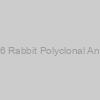 CD316 Rabbit Polyclonal Antibody |
|
ES4212-100ul |
ELK Biotech |
100ul |
EUR 124 |
|
|
|
Description: A Rabbit Polyclonal antibody against CD316 from Human/Mouse. This antibody is tested and validated for WB, ELISA, WB, ELISA |
 CD316 Rabbit Polyclonal Antibody |
|
ES4212-50ul |
ELK Biotech |
50ul |
EUR 74 |
|
|
|
Description: A Rabbit Polyclonal antibody against CD316 from Human/Mouse. This antibody is tested and validated for WB, ELISA, WB, ELISA |
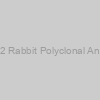 CD292 Rabbit Polyclonal Antibody |
|
ES4258-100ul |
ELK Biotech |
100ul |
EUR 124 |
|
|
|
Description: A Rabbit Polyclonal antibody against CD292 from Human. This antibody is tested and validated for WB, ELISA, WB, ELISA |
 CD292 Rabbit Polyclonal Antibody |
|
ES4258-50ul |
ELK Biotech |
50ul |
EUR 74 |
|
|
|
Description: A Rabbit Polyclonal antibody against CD292 from Human. This antibody is tested and validated for WB, ELISA, WB, ELISA |
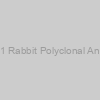 CD101 Rabbit Polyclonal Antibody |
|
ES4330-100ul |
ELK Biotech |
100ul |
EUR 124 |
|
|
|
Description: A Rabbit Polyclonal antibody against CD101 from Human. This antibody is tested and validated for WB, ELISA, WB, ELISA |
 CD101 Rabbit Polyclonal Antibody |
|
ES4330-50ul |
ELK Biotech |
50ul |
EUR 74 |
|
|
|
Description: A Rabbit Polyclonal antibody against CD101 from Human. This antibody is tested and validated for WB, ELISA, WB, ELISA |
 CD138 Rabbit Polyclonal Antibody |
|
ES4340-100ul |
ELK Biotech |
100ul |
EUR 124 |
|
|
|
Description: A Rabbit Polyclonal antibody against CD138 from Human. This antibody is tested and validated for WB, ELISA, IHC, WB, ELISA |
 CD138 Rabbit Polyclonal Antibody |
|
ES4340-50ul |
ELK Biotech |
50ul |
EUR 74 |
|
|
|
Description: A Rabbit Polyclonal antibody against CD138 from Human. This antibody is tested and validated for WB, ELISA, IHC, WB, ELISA |
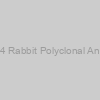 CD244 Rabbit Polyclonal Antibody |
|
ES4345-100ul |
ELK Biotech |
100ul |
EUR 124 |
|
|
|
Description: A Rabbit Polyclonal antibody against CD244 from Human. This antibody is tested and validated for WB, ELISA, IHC, WB, ELISA |
 CD244 Rabbit Polyclonal Antibody |
|
ES4345-50ul |
ELK Biotech |
50ul |
EUR 74 |
|
|
|
Description: A Rabbit Polyclonal antibody against CD244 from Human. This antibody is tested and validated for WB, ELISA, IHC, WB, ELISA |
 CD298 Rabbit Polyclonal Antibody |
|
ES4353-100ul |
ELK Biotech |
100ul |
EUR 124 |
|
|
|
Description: A Rabbit Polyclonal antibody against CD298 from Human. This antibody is tested and validated for WB, ELISA, WB, ELISA |
 CD298 Rabbit Polyclonal Antibody |
|
ES4353-50ul |
ELK Biotech |
50ul |
EUR 74 |
|
|
|
Description: A Rabbit Polyclonal antibody against CD298 from Human. This antibody is tested and validated for WB, ELISA, WB, ELISA |
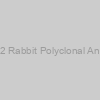 CD232 Rabbit Polyclonal Antibody |
|
ES4357-100ul |
ELK Biotech |
100ul |
EUR 124 |
|
|
|
Description: A Rabbit Polyclonal antibody against CD232 from Human/Mouse/Rat. This antibody is tested and validated for WB, ELISA, WB, ELISA |
 CD232 Rabbit Polyclonal Antibody |
|
ES4357-50ul |
ELK Biotech |
50ul |
EUR 74 |
|
|
|
Description: A Rabbit Polyclonal antibody against CD232 from Human/Mouse/Rat. This antibody is tested and validated for WB, ELISA, WB, ELISA |
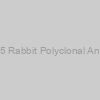 CD155 Rabbit Polyclonal Antibody |
|
ES4358-100ul |
ELK Biotech |
100ul |
EUR 124 |
|
|
|
Description: A Rabbit Polyclonal antibody against CD155 from Human/Mouse/Rat. This antibody is tested and validated for WB, ELISA, WB, ELISA |
 CD155 Rabbit Polyclonal Antibody |
|
ES4358-50ul |
ELK Biotech |
50ul |
EUR 74 |
|
|
|
Description: A Rabbit Polyclonal antibody against CD155 from Human/Mouse/Rat. This antibody is tested and validated for WB, ELISA, WB, ELISA |
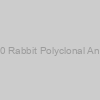 CD180 Rabbit Polyclonal Antibody |
|
ES4359-100ul |
ELK Biotech |
100ul |
EUR 124 |
|
|
|
Description: A Rabbit Polyclonal antibody against CD180 from Human/Mouse/Rat. This antibody is tested and validated for WB, ELISA, WB, ELISA |
 CD180 Rabbit Polyclonal Antibody |
|
ES4359-50ul |
ELK Biotech |
50ul |
EUR 74 |
|
|
|
Description: A Rabbit Polyclonal antibody against CD180 from Human/Mouse/Rat. This antibody is tested and validated for WB, ELISA, WB, ELISA |
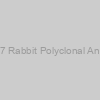 CD267 Rabbit Polyclonal Antibody |
|
ES4362-100ul |
ELK Biotech |
100ul |
EUR 124 |
|
|
|
Description: A Rabbit Polyclonal antibody against CD267 from Human. This antibody is tested and validated for WB, ELISA, WB, ELISA |
 CD267 Rabbit Polyclonal Antibody |
|
ES4362-50ul |
ELK Biotech |
50ul |
EUR 74 |
|
|
|
Description: A Rabbit Polyclonal antibody against CD267 from Human. This antibody is tested and validated for WB, ELISA, WB, ELISA |
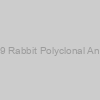 CD209 Rabbit Polyclonal Antibody |
|
ES4363-100ul |
ELK Biotech |
100ul |
EUR 124 |
|
|
|
Description: A Rabbit Polyclonal antibody against CD209 from Human/Mouse/Rat. This antibody is tested and validated for WB, ELISA, WB, ELISA |
 CD209 Rabbit Polyclonal Antibody |
|
ES4363-50ul |
ELK Biotech |
50ul |
EUR 74 |
|
|
|
Description: A Rabbit Polyclonal antibody against CD209 from Human/Mouse/Rat. This antibody is tested and validated for WB, ELISA, WB, ELISA |
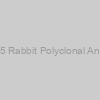 CD305 Rabbit Polyclonal Antibody |
|
ES4364-100ul |
ELK Biotech |
100ul |
EUR 124 |
|
|
|
Description: A Rabbit Polyclonal antibody against CD305 from Human. This antibody is tested and validated for WB, ELISA, WB, ELISA |
 CD305 Rabbit Polyclonal Antibody |
|
ES4364-50ul |
ELK Biotech |
50ul |
EUR 74 |
|
|
|
Description: A Rabbit Polyclonal antibody against CD305 from Human. This antibody is tested and validated for WB, ELISA, WB, ELISA |
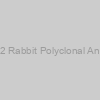 CD192 Rabbit Polyclonal Antibody |
|
ES4365-100ul |
ELK Biotech |
100ul |
EUR 124 |
|
|
|
Description: A Rabbit Polyclonal antibody against CD192 from Human. This antibody is tested and validated for WB, ELISA, WB, ELISA |
 CD192 Rabbit Polyclonal Antibody |
|
ES4365-50ul |
ELK Biotech |
50ul |
EUR 74 |
|
|
|
Description: A Rabbit Polyclonal antibody against CD192 from Human. This antibody is tested and validated for WB, ELISA, WB, ELISA |
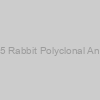 CD315 Rabbit Polyclonal Antibody |
|
ES4367-100ul |
ELK Biotech |
100ul |
EUR 124 |
|
|
|
Description: A Rabbit Polyclonal antibody against CD315 from Human/Mouse/Rat. This antibody is tested and validated for WB, ELISA, IHC, WB, ELISA |
 CD315 Rabbit Polyclonal Antibody |
|
ES4367-50ul |
ELK Biotech |
50ul |
EUR 74 |
|
|
|
Description: A Rabbit Polyclonal antibody against CD315 from Human/Mouse/Rat. This antibody is tested and validated for WB, ELISA, IHC, WB, ELISA |
 CD116 Rabbit Polyclonal Antibody |
|
ES4849-100ul |
ELK Biotech |
100ul |
EUR 124 |
|
|
|
Description: A Rabbit Polyclonal antibody against CD116 from Human. This antibody is tested and validated for WB, ELISA, WB, ELISA |
 CD116 Rabbit Polyclonal Antibody |
|
ES4849-50ul |
ELK Biotech |
50ul |
EUR 74 |
|
|
|
Description: A Rabbit Polyclonal antibody against CD116 from Human. This antibody is tested and validated for WB, ELISA, WB, ELISA |
 CD272 Rabbit Polyclonal Antibody |
|
ES4911-100ul |
ELK Biotech |
100ul |
EUR 124 |
|
|
|
Description: A Rabbit Polyclonal antibody against CD272 from Human. This antibody is tested and validated for WB, ELISA, WB, ELISA |
 CD272 Rabbit Polyclonal Antibody |
|
ES4911-50ul |
ELK Biotech |
50ul |
EUR 74 |
|
|
|
Description: A Rabbit Polyclonal antibody against CD272 from Human. This antibody is tested and validated for WB, ELISA, WB, ELISA |
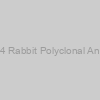 CD314 Rabbit Polyclonal Antibody |
|
ES5272-100ul |
ELK Biotech |
100ul |
EUR 124 |
|
|
|
Description: A Rabbit Polyclonal antibody against CD314 from Human. This antibody is tested and validated for WB, ELISA, WB, ELISA |
 CD314 Rabbit Polyclonal Antibody |
|
ES5272-50ul |
ELK Biotech |
50ul |
EUR 74 |
|
|
|
Description: A Rabbit Polyclonal antibody against CD314 from Human. This antibody is tested and validated for WB, ELISA, WB, ELISA |
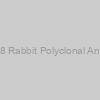 CD168 Rabbit Polyclonal Antibody |
|
ES5748-100ul |
ELK Biotech |
100ul |
EUR 124 |
|
|
|
Description: A Rabbit Polyclonal antibody against CD168 from Human. This antibody is tested and validated for WB, ELISA, IHC, WB, ELISA |
 CD168 Rabbit Polyclonal Antibody |
|
ES5748-50ul |
ELK Biotech |
50ul |
EUR 74 |
|
|
|
Description: A Rabbit Polyclonal antibody against CD168 from Human. This antibody is tested and validated for WB, ELISA, IHC, WB, ELISA |
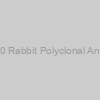 CD130 Rabbit Polyclonal Antibody |
|
ES5883-100ul |
ELK Biotech |
100ul |
EUR 124 |
|
|
|
Description: A Rabbit Polyclonal antibody against CD130 from Human/Mouse. This antibody is tested and validated for WB, ELISA, IHC, IF, WB, ELISA |
 CD130 Rabbit Polyclonal Antibody |
|
ES5883-50ul |
ELK Biotech |
50ul |
EUR 74 |
|
|
|
Description: A Rabbit Polyclonal antibody against CD130 from Human/Mouse. This antibody is tested and validated for WB, ELISA, IHC, IF, WB, ELISA |
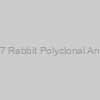 CD137 Rabbit Polyclonal Antibody |
|
ES5901-100ul |
ELK Biotech |
100ul |
EUR 124 |
|
|
|
Description: A Rabbit Polyclonal antibody against CD137 from Human. This antibody is tested and validated for WB, ELISA, IF, WB, ELISA |
 CD137 Rabbit Polyclonal Antibody |
|
ES5901-50ul |
ELK Biotech |
50ul |
EUR 74 |
|
|
|
Description: A Rabbit Polyclonal antibody against CD137 from Human. This antibody is tested and validated for WB, ELISA, IF, WB, ELISA |
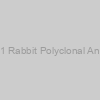 CD141 Rabbit Polyclonal Antibody |
|
ES7386-100ul |
ELK Biotech |
100ul |
EUR 124 |
|
|
|
Description: A Rabbit Polyclonal antibody against CD141 from Human. This antibody is tested and validated for WB, ELISA, WB, ELISA |
 CD141 Rabbit Polyclonal Antibody |
|
ES7386-50ul |
ELK Biotech |
50ul |
EUR 74 |
|
|
|
Description: A Rabbit Polyclonal antibody against CD141 from Human. This antibody is tested and validated for WB, ELISA, WB, ELISA |
 CD307 Rabbit Polyclonal Antibody |
|
ES7681-100ul |
ELK Biotech |
100ul |
EUR 124 |
|
|
|
Description: A Rabbit Polyclonal antibody against CD307 from Human. This antibody is tested and validated for WB, ELISA, WB, ELISA |
 CD307 Rabbit Polyclonal Antibody |
|
ES7681-50ul |
ELK Biotech |
50ul |
EUR 74 |
|
|
|
Description: A Rabbit Polyclonal antibody against CD307 from Human. This antibody is tested and validated for WB, ELISA, WB, ELISA |
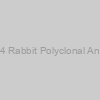 CD164 Rabbit Polyclonal Antibody |
|
ES7872-100ul |
ELK Biotech |
100ul |
EUR 124 |
|
|
|
Description: A Rabbit Polyclonal antibody against CD164 from Human/Mouse/Rat. This antibody is tested and validated for IHC, WB, ELISA |
 CD164 Rabbit Polyclonal Antibody |
|
ES7872-50ul |
ELK Biotech |
50ul |
EUR 74 |
|
|
|
Description: A Rabbit Polyclonal antibody against CD164 from Human/Mouse/Rat. This antibody is tested and validated for IHC, WB, ELISA |
 CD264 Rabbit Polyclonal Antibody |
|
ES7878-100ul |
ELK Biotech |
100ul |
EUR 124 |
|
|
|
Description: A Rabbit Polyclonal antibody against CD264 from Human. This antibody is tested and validated for WB, ELISA, WB, ELISA |
 CD264 Rabbit Polyclonal Antibody |
|
ES7878-50ul |
ELK Biotech |
50ul |
EUR 74 |
|
|
|
Description: A Rabbit Polyclonal antibody against CD264 from Human. This antibody is tested and validated for WB, ELISA, WB, ELISA |
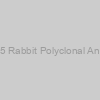 CD205 Rabbit Polyclonal Antibody |
|
ES6143-100ul |
ELK Biotech |
100ul |
EUR 124 |
|
|
|
Description: A Rabbit Polyclonal antibody against CD205 from Human. This antibody is tested and validated for WB, ELISA, WB, ELISA |
 CD205 Rabbit Polyclonal Antibody |
|
ES6143-50ul |
ELK Biotech |
50ul |
EUR 74 |
|
|
|
Description: A Rabbit Polyclonal antibody against CD205 from Human. This antibody is tested and validated for WB, ELISA, WB, ELISA |
 CD110 Rabbit Polyclonal Antibody |
|
ES6266-100ul |
ELK Biotech |
100ul |
EUR 124 |
|
|
|
Description: A Rabbit Polyclonal antibody against CD110 from Human. This antibody is tested and validated for WB, ELISA, WB, ELISA |
 CD110 Rabbit Polyclonal Antibody |
|
ES6266-50ul |
ELK Biotech |
50ul |
EUR 74 |
|
|
|
Description: A Rabbit Polyclonal antibody against CD110 from Human. This antibody is tested and validated for WB, ELISA, WB, ELISA |
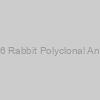 CD206 Rabbit Polyclonal Antibody |
|
ES6267-100ul |
ELK Biotech |
100ul |
EUR 124 |
|
|
|
Description: A Rabbit Polyclonal antibody against CD206 from Human/Mouse/Rat. This antibody is tested and validated for WB, ELISA, WB, ELISA |
 CD206 Rabbit Polyclonal Antibody |
|
ES6267-50ul |
ELK Biotech |
50ul |
EUR 74 |
|
|
|
Description: A Rabbit Polyclonal antibody against CD206 from Human/Mouse/Rat. This antibody is tested and validated for WB, ELISA, WB, ELISA |
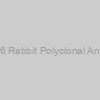 CD306 Rabbit Polyclonal Antibody |
|
ES8397-100ul |
ELK Biotech |
100ul |
EUR 124 |
|
|
|
Description: A Rabbit Polyclonal antibody against CD306 from Human. This antibody is tested and validated for WB, ELISA, WB, ELISA |
CD152 Rabbit Polyclonal Antibody
